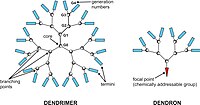
Photo from wikipedia
Abstract This paper described microstructure evolution of interfacial intermetallic compound (IMC) layers in a series of Sn-37Pb/Cu-Co systems (the different amount of Co additions was a variable in this experiment,… Click to show full abstract
Abstract This paper described microstructure evolution of interfacial intermetallic compound (IMC) layers in a series of Sn-37Pb/Cu-Co systems (the different amount of Co additions was a variable in this experiment, and we represented it with Cu-xCo in the rest of this article). With the same aging temperature (150 °C), the addition of Co significantly influenced the interfacial reaction between Sn-37 Pb solder and Cu-Co substrate. Through analyses of these changes, we found that Co addition was an important strategy to control IMC thickness and improve the interfacial wettability. Additionally, correlations between the thickness of IMC layers and aging time were established, and successfully fitted into linear functions, and this relationship corresponded to the characteristics of growth mechanism controlled by volume diffusion. Unfortunately, Kirkendall voids and microcracks were still inevitable in the current study, which could severely degrade the performance of solder joint, so further methods to improve these defects need to be explored.
Journal Title: Vacuum
Year Published: 2019
Link to full text (if available)
Share on Social Media: Sign Up to like & get
recommendations!